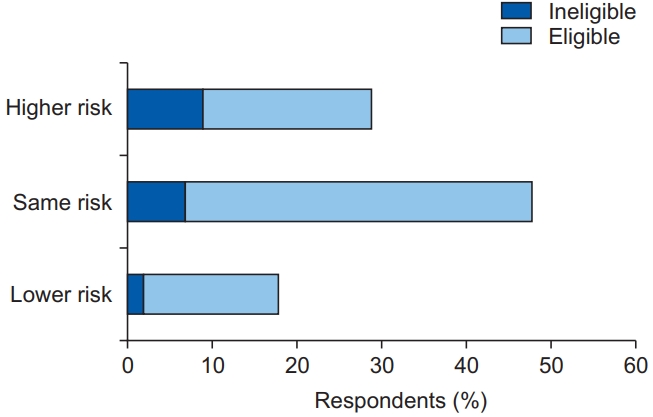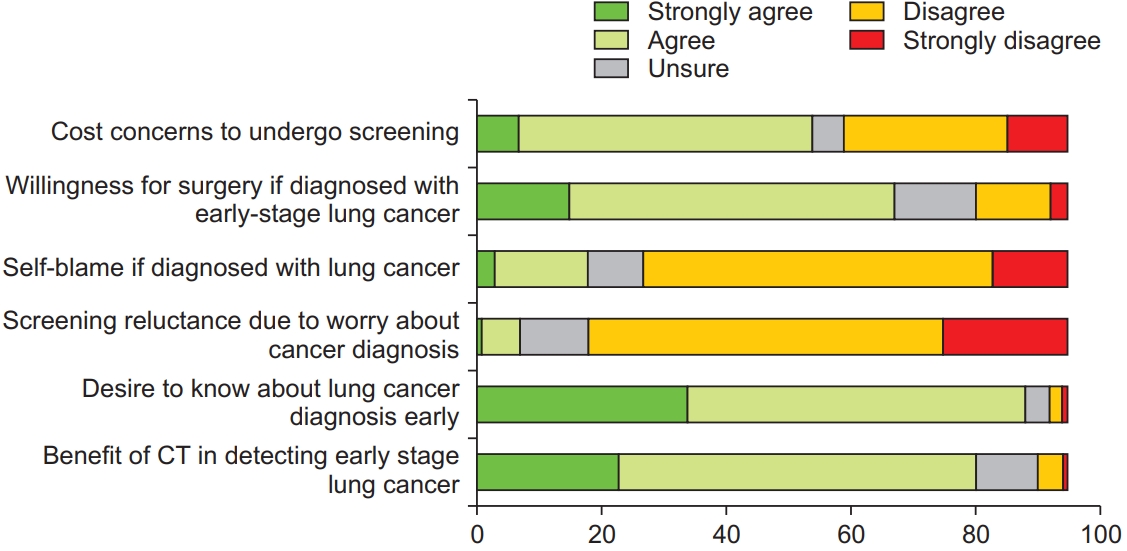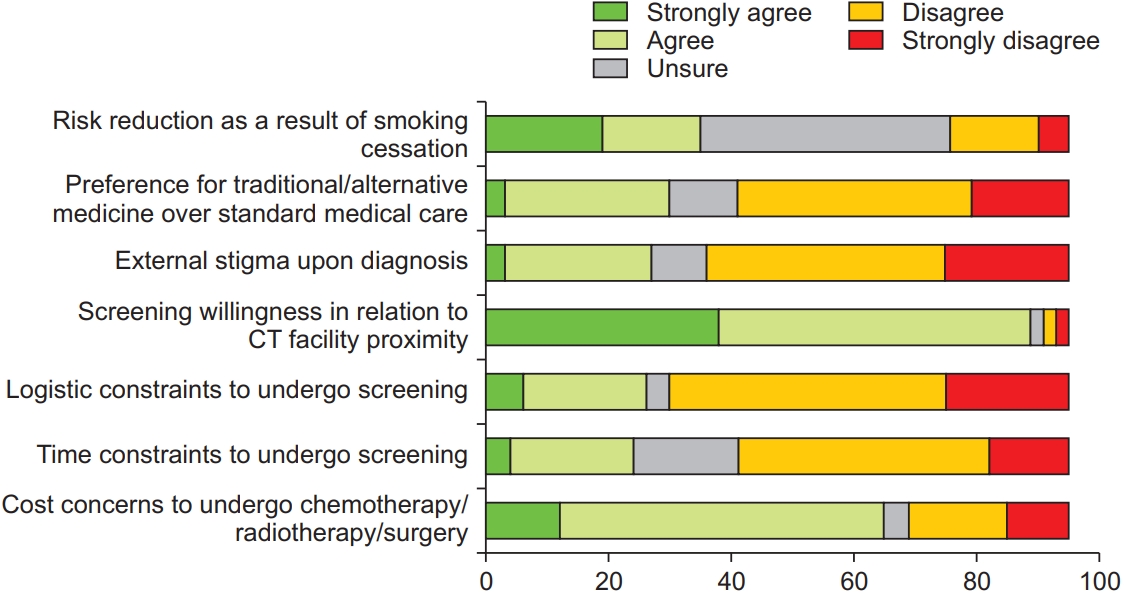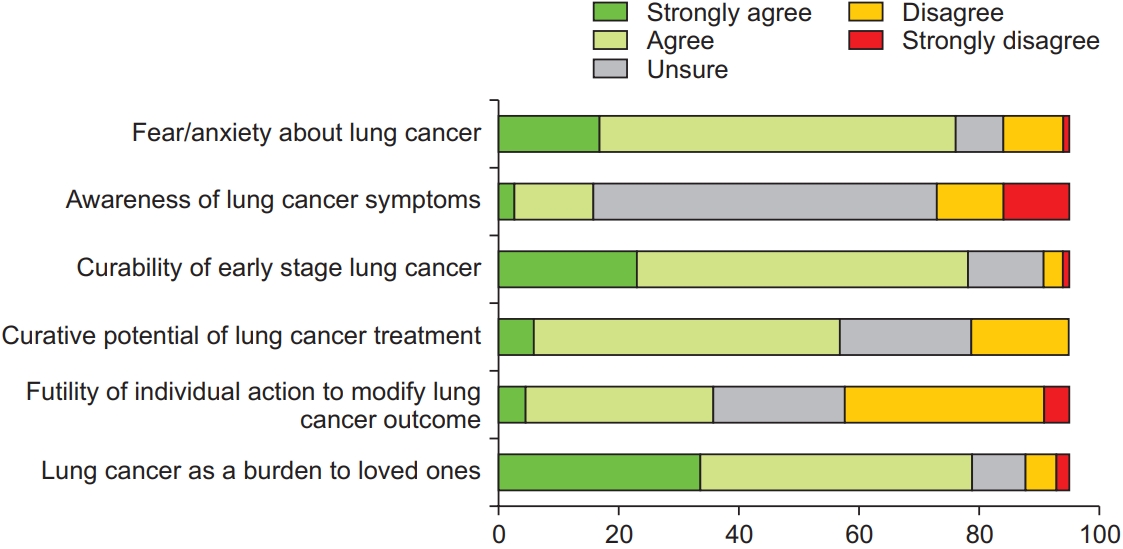 |
 |
| Tuberc Respir Dis > Volume 86(4); 2023 > Article |
|
Abstract
Background
Methods
Results
Notes
Authors’ Contributions
Conceptualization: Nyanti LE, Ramarmuty HYD. Methodology: Nyanti LE, Ramarmuty HYD, Sivaraman Kannan KK. Formal analysis: Nyanti LE, Abd Rahim MA. Data curation: Chua CZ, Loo HC, Khor CZ, Toh ESY, Gill RS, Chan ET, Tan KY, Ibrahim A. Validation: Rosli T, Huan NC, Ramarmuty HYD. Investigation: Huan NC. Writing - original draft preparation: Nyanti LE, Abd Rahim MA. Writing - review and editing: Chua CZ, Loo HC, Khor CZ, Toh ESY, Gill RS, Chan ET, Rosli T, Ibrahim A, Huan NC, Ramarmuty HYD, Sivaraman Kannan KK. Approval of final manuscript: all authors.
Acknowledgments
Fig. 1.

Fig. 3.

Fig. 4.

Table 1.
Values are presented as number (%), mean±standard deviation, or median (interquartile range).
Age at which smoking was commenced, median (interquartile range): 17.5 years (15 to 20); Youngest age at which smoking was commenced: 5 years old.
LDCT: low-dose computed tomography; NA: not applicable; COPD: chronic obstructive pulmonary disease; BMI: body mass index; PLCO: perceived lung cancer risk and objective risk.
Table 2.
REFERENCES
- TOOLS
-
METRICS

-
- 0 Crossref
- 0 Scopus
- 2,825 View
- 132 Download
- ORCID iDs
-
Larry Ellee Nyanti

https://orcid.org/0000-0002-5790-3919 - Related articles



 PDF Links
PDF Links PubReader
PubReader ePub Link
ePub Link Data Sharing Statement
Data Sharing Statement Full text via DOI
Full text via DOI Print
Print Download Citation
Download Citation



